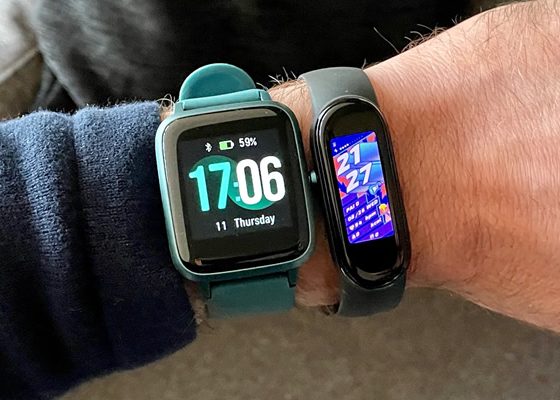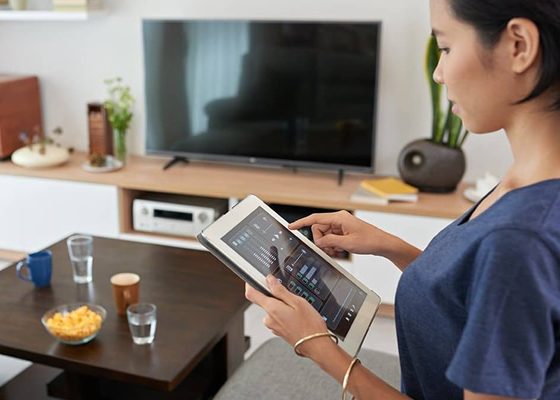The world of photography has been dramatically transformed by the rise of aerial photography, and at the heart of this evolution lies camera drones. These remarkable devices have opened up new vistas, offering photographers unique perspectives and innovative creative possibilities. In this comprehensive guide, we will delve into the intricate realm of camera drones, exploring their applications, benefits, and helping you choose the ideal one for your aerial photography adventures.
Introduction
Aerial photography, once a privilege reserved for pilots and professional photographers, has now become accessible to the masses, thanks to the proliferation of camera drones. These small, unmanned aerial vehicles have revolutionized the way we capture the world from above. In this article, we will explore the fascinating world of camera drones, their role in aerial photography, and the purpose of this guide.
Understanding Aerial Photography
Aerial photography, as an art and science, is rooted in capturing images from above the Earth’s surface. Historically, this practice involved manned aircraft or helicopters. However, with the advent of camera drones, capturing aerial perspectives has become more convenient and cost-effective.
Aerial photography finds applications in various domains, from cartography and environmental monitoring to real estate and filmmaking. It provides a unique bird’s-eye view of landscapes, events, and structures, enabling us to see the world from a fresh angle.
Benefits of Camera Drones
Accessibility and Affordability
One of the most compelling benefits of camera drones is their accessibility and affordability. In the past, aerial photography required costly aircraft rentals and professional pilots. Camera drones democratize this field, allowing enthusiasts and professionals alike to explore the skies without breaking the bank.
Safety and Convenience
Camera drones are designed with safety in mind. Equipped with obstacle avoidance technology and GPS systems, they minimize the risk of accidents. Their portability and ease of use make them ideal for both beginners and experienced photographers.
Unique Perspectives
Drones provide access to unique perspectives that were previously unattainable. They can hover above a subject, soar over mountains, or skim the surface of water, offering fresh angles and vantage points that ignite creativity.
Creative Possibilities
Aerial photography with drones unlocks a realm of creative possibilities. With the right drone and camera setup, you can capture stunning panoramic shots, follow intricate subjects, and even create captivating time-lapse sequences.
Choosing the Right Camera Drone
Selecting the right camera drone involves considering several key factors. Let’s explore these factors in detail:
Budget Considerations
Your budget plays a crucial role in determining the drone you can afford. Camera drones come in various price ranges, so it’s important to set a budget that aligns with your financial capabilities.
Camera Specifications
The quality of the camera on your drone is paramount. Consider factors like resolution, lens quality, and the ability to shoot in different lighting conditions.
Flight Performance
Assess the drone’s flight performance, including stability, agility, and wind resistance. A drone with reliable flight performance is crucial for capturing sharp and stable aerial shots.
Portability and Size
Consider the portability and size of the drone. Smaller drones are easier to transport, but they may sacrifice certain features compared to their larger counterparts.
Battery Life and Charging
Battery life determines how long you can keep your drone in the air. It’s essential to consider the duration of flights you need and the time it takes to charge the batteries.
GPS and Navigation Features
Drones equipped with GPS and advanced navigation features offer greater precision and safety during flights. These features are especially important if you plan to fly in complex environments.
Remote Control Options
The type of remote control or controller that comes with the drone is also a critical factor. Some drones offer advanced control options with customizable settings, while others are more straightforward.
Top Camera Drones for Aerial Photography
Let’s take a closer look at some of the top camera drones renowned for their performance in aerial photography:
DJI Mavic Air 2: Unmatched Versatility
The DJI Mavic Air 2 is celebrated for its versatility. With its 48-megapixel camera, 4K video capabilities, and intelligent shooting modes, it’s a top choice for both enthusiasts and professionals.
Skydio 2: Advanced Obstacle Avoidance
The Skydio 2 stands out for its advanced obstacle avoidance technology. It can navigate complex environments with ease, making it an excellent choice for capturing dynamic, obstacle-rich scenes.
Autel Robotics EVO Lite+: Professional-grade Camera
The Autel Robotics EVO Lite+ impresses with its professional-grade camera. With a one-inch sensor, it’s capable of capturing high-quality images and videos in various conditions.
Parrot Anafi USA: Security and Performance
The Parrot Anafi USA is renowned for its security features, making it a favorite among those concerned about privacy and data protection. It also offers exceptional performance and imaging capabilities.
Yuneec Typhoon H Pro: Hexacopter Excellence
The Yuneec Typhoon H Pro is unique for its hexacopter design, providing redundancy and reliability. Its camera offers high-quality 4K video and 20-megapixel photos.
In-Depth Reviews
DJI Mavic Air 2: Unmatched Versatility
The DJI Mavic Air 2 is a remarkable drone that strikes a balance between performance and affordability. It boasts a 48-megapixel camera with a 1/2-inch sensor, allowing for impressive stills and 4K video at 60fps.
This drone comes equipped with an array of intelligent shooting modes, including SmartPhoto, which optimizes camera settings for different scenes. Its impressive battery life of up to 34 minutes in the air ensures you have ample time for capturing stunning aerial shots.
Skydio 2: Advanced Obstacle Avoidance
The Skydio 2 is the go-to choice for aerial photographers who need to navigate complex, obstacle-rich environments. Its advanced obstacle avoidance technology utilizes six 4K navigation cameras to map and track objects in real-time.
The Skydio 2 can autonomously follow subjects, avoiding obstacles with remarkable precision. This feature opens up exciting creative opportunities for capturing action-packed scenes.
Autel Robotics EVO Lite+: Professional-grade Camera
If you prioritize camera quality, the Autel Robotics EVO Lite+ won’t disappoint. It features a one-inch CMOS sensor capable of shooting 6K video and 48-megapixel stills. The 35-minute flight time provides ample opportunity to capture breathtaking footage.
With a range of shooting modes and automated flight features, this drone is a valuable tool for photographers looking to push the boundaries of their craft.
Parrot Anafi USA: Security and Performance
The Parrot Anafi USA is a robust and secure drone designed for professional use. Equipped with a 32x zoom camera, it can capture detailed images from a distance, making it an excellent choice for surveillance, inspection, and search-and-rescue missions.
Additionally, this drone is built with data security in mind, ensuring that sensitive information remains protected during flights.
Yuneec Typhoon H Pro: Hexacopter Excellence
The Yuneec Typhoon H Pro’s hexacopter design offers redundancy and stability, making it a reliable choice for aerial photography. Its 20-megapixel camera is capable of shooting 4K video and 360-degree photos.
The drone’s retractable landing gear and folding arms make it highly portable, despite its larger size. This feature adds to its appeal for photographers who require a balance between performance and convenience.
User Experiences
A deeper understanding of camera drones and their impact can be gained by examining the experiences of users who have embarked on their own aerial photography journeys.
Real-World Feedback
Camera drone users often share their real-world experiences, offering valuable insights into the strengths and limitations of various models. These firsthand accounts can aid in decision-making and provide inspiration for your own aerial photography ventures.
Success Stories
Aerial photography has enabled individuals to capture stunning images and videos that were once impossible to obtain. Success stories of photographers, filmmakers, and hobbyists abound, demonstrating the incredible potential of camera drones.
Common Challenges
Like any technology, camera drones come with their set of challenges. These can include learning to fly, dealing with technical issues, and adhering to drone regulations. Recognizing and addressing these challenges is essential for a smooth and enjoyable aerial photography experience.
Aerial Photography Tips
Understanding the Basics
Aerial photography is an art that requires a solid foundation. Understanding the basics of composition, exposure, and camera settings is crucial for capturing stunning aerial shots.
Composition and Framing
When composing aerial photographs, consider the principles of framing and composition. The rule of thirds, leading lines, and balance all apply to aerial photography, helping you create visually appealing images.
Lighting Considerations
Lighting plays a pivotal role in aerial photography. The angle and quality of light can dramatically impact your shots. Time your flights to take advantage of the best lighting conditions, such as the golden hour.
Post-Processing
Post-processing is an integral part of aerial photography. Editing software can help enhance colors, contrast, and sharpness, ensuring your aerial images reach their full potential.
Legal Considerations
Drone Regulations
Before taking to the skies, it’s essential to be aware of and adhere to drone regulations in your area. Familiarize yourself with rules regarding flight altitude, no-fly zones, and privacy concerns.
Privacy Concerns
Respect for privacy is paramount. Be mindful of people’s privacy when capturing images from above, and avoid infringing on private spaces or individuals without proper consent.
Flying Responsibly
Flying responsibly means being considerate of the environment, wildlife, and other airspace users. Avoid disturbing wildlife and maintain a safe distance from other aircraft.
Maintenance and Care
Cleaning and Storage
Proper maintenance includes cleaning your drone to remove dirt, dust, and debris. Store your drone in a cool, dry place, and protect it from extreme temperatures and humidity.
Software Updates
Regularly update your drone’s software to ensure it operates at its best and remains compatible with the latest technology and regulations.
Repairs and Maintenance Checks
If your drone encounters damage or technical issues, address them promptly. Routine maintenance checks can help prevent problems before they arise, ensuring your drone’s longevity.
Future Trends in Aerial Photography
The world of aerial photography is continually evolving, and it’s essential to keep an eye on emerging trends and technologies that shape the industry.
Advancements in Drone Technology
Drone technology is advancing at a rapid pace. Keep an eye on developments such as increased battery life, improved obstacle avoidance, and enhanced camera capabilities.
Integration with VR and AR
The integration of virtual reality (VR) and augmented reality (AR) with aerial photography is an exciting frontier. These technologies can provide immersive experiences and new storytelling opportunities.
Evolving Photography Styles
Aerial photography is not static; it evolves with the artistic preferences of photographers and the demands of industries. Keep an eye on emerging styles and techniques to stay at the forefront of this dynamic field.
Conclusion
In this guide, we’ve explored the captivating world of camera drones and their significance in the realm of aerial photography. Choosing the right drone involves considering budget, camera specifications, flight performance, and more. Our in-depth reviews of top camera drones offer insights into the finest models available.
User experiences, tips for successful aerial photography, legal considerations, and maintenance guidelines are all crucial aspects of embarking on your aerial photography journey. As technology continues to advance, the future of aerial photography promises exciting developments, making it a thrilling field for both enthusiasts and professionals.



